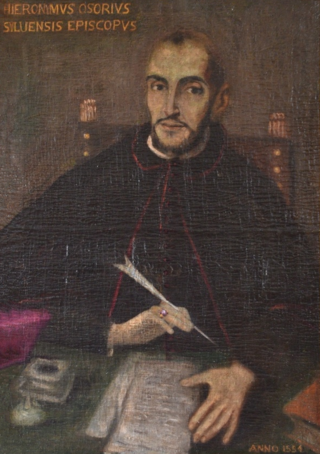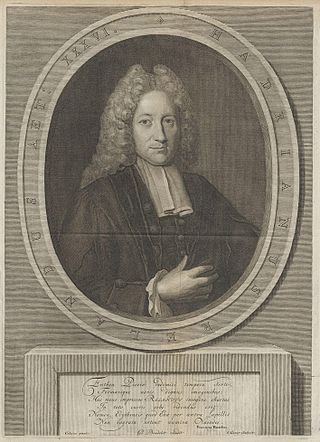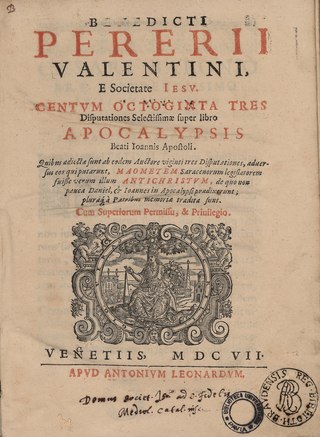Thābit ibn Qurra ; 826 or 836 – February 19, 901, was a polymath known for his work in mathematics, medicine, astronomy, and translation. He lived in Baghdad in the second half of the ninth century during the time of the Abbasid Caliphate.
Étienne Fourmont was a French scholar and Orientalist who served as professor of Arabic at the Collège de France and published grammars on the Arabic, Hebrew, and Chinese languages.

Abū al-ʿAbbās Aḥmad ibn Muḥammad ibn Kathīr al-Farghānī also known as Alfraganus in the West, was an astronomer in the Abbasid court in Baghdad, and one of the most famous astronomers in the 9th century. Al-Farghani composed several works on astronomy and astronomical equipment that were widely distributed in Arabic and Latin and were influential to many scientists. His best known work, Kitāb fī Jawāmiʿ ʿIlm al-Nujūmi, was an extensive summary of Ptolemy's Almagest containing revised and more accurate experimental data. Christopher Columbus used Al Farghani’s calculations for his voyages to America. In addition to making substantial contributions to astronomy, al-Farghani also worked as an engineer, supervising construction projects on rivers in Cairo, Egypt. The lunar crater Alfraganus is named after him.

The Summa contra Gentiles is one of the best-known treatises by Thomas Aquinas, written as four books between 1259 and 1265.

Abū ʿAbd Allāh Muḥammad ibn Jābir ibn Sinān al-Raqqī al-Ḥarrānī aṣ-Ṣābiʾ al-Battānī, usually called al-Battānī, a name that was in the past Latinized as Albategnius, was an astronomer, astrologer and mathematician, who lived and worked for most of his life at Raqqa, now in Syria. He is considered to be the greatest and most famous of the astronomers of the medieval Islamic world.

Giuseppe Simone Assemani (Classical Syriac : ܝܵܘܣܸܦ ܒܲܪ ܫܸܡܥܘܿܢ, was a librarian, Lebanese Maronite orientalist, and Catholic bishop. For his efforts, and his encyclopedic knowledge, he earned the nickname "The Great Assemani".

Marcus Zuerius van Boxhorn was a Dutch scholar. Born in Bergen op Zoom, he was professor at the University of Leiden. He discovered the similarity among Indo-European languages, and supposed the existence of a primitive common language which he called 'Scythian'. He included in his hypothesis Dutch, Greek, Latin, Persian, and German, later adding Slavic, Celtic and Baltic languages. He excluded languages such as Hebrew from his hypothesis. He died in Leiden.

D. Jerónimo Osório da Fonseca was a Portuguese Roman Catholic humanist bishop, historian and polemicist. An extensive notice of his life and thought (Vita) was written by his nephew, a canon of Évora also named Jerónimo Osório, to introduce his edition of his uncle's Complete Works published in 1592.
Jirjis al-Makīn, known by his nisbaIbn al-ʿAmīd, was a Coptic Christian historian who wrote in Arabic. His name is sometimes anglicised as George Elmacin.

Andreas Schott was an academic, linguist, translator, editor and a Jesuit priest from Antwerp in the Habsburg Netherlands. He was mainly known for his editions of Latin and Greek classical literature.

Adriaan Reland was a noted Dutch Orientalist scholar, cartographer and philologist. Even though he never left the Netherlands, or visited the Holy Land, he made significant contributions to Middle Eastern and Asian linguistics and cartography, including Persia, Japan and the Holy Lands.
Giovanni BaptistaFerrari, was an Italian Jesuit, orientalist, university teacher and botanist. Linguistically highly gifted and an able scientist, at 21 years of age Ferrari knew a good deal of Hebrew and spoke and wrote excellent Greek and Latin. He became a professor of Hebrew and Rhetoric at the Jesuit College in Rome and in 1622 edited a Syriac-Latin dictionary.

Benedict Pereira was a Spanish Jesuit philosopher, theologian, and exegete.

François Savary de Brèves was a French ambassador of the 16th and 17th centuries as well as an Orientalist.
Antonius Agellius, C.R. or Antonio Agellio (1532–1608) was bishop of Acerno and a member of the Theatines, born in Sorrento. He was an editor of the Clementine edition of the Latin Vulgate.

ʿAbū ʿAbdullāh Muhammad Ibn ʿAbū Yazīd Tayfūr Sajāvandī Ghaznavī, also known as Abū al-Fazl as-Sajāwandī al-Qāriʾ was a 12th-century Islamic scholar, mystic, Qāriʾ and theologian. He is primarily known for his contributions to the Islamic traditions of recitation and pronunciation, creating a set of rules and markers used to indicate the pronunciation and pauses of Quranic recital, known as Sajawandi stop signs or Rumuz al-Awqaf as-Sajāwandī. He is also credited as being the first known person to use coloured circles as a means of separating verses in the Quran, a design choice which has persisted til today, with the addition of a verse number inside of the circle. In Persian, the term muṣ·ḥaf sajāwandī مُصْحَف سَجَاوَنْدِي may today be used to denote an elegantly written Quran, accounting for the association between Sajawandi and his use of lavish red and golden dots as pause markers. His son Ahmad ibn Muhammad Sajawandi was also a well-known chronicler, commentator on the Quran, poet and orator.
Hendrik Arent Hamaker was a Dutch Assyriologist, philologist and orientalist. He studied most European and Asian languages, and the history and geography of the East. He was an associate of the orientalist Johannes Hendricus van der Palm, and Theodor Juynboll was among his pupils.
Accursia of Accorsia(ca. 1230–1281) was allegedly an Italian jurist from Bologna, whose existence is debated.

Baldassarre Bonifacio was an Italian Catholic bishop, theologian, scholar and historian, known for his work De archivis liber singularis (1632), the first known treatise on the management of archives.
Pietro Paolo Bombino was an Italian Jesuit, orator, theologian and historian. Bombino was the first biographer of Edmund Campion.













